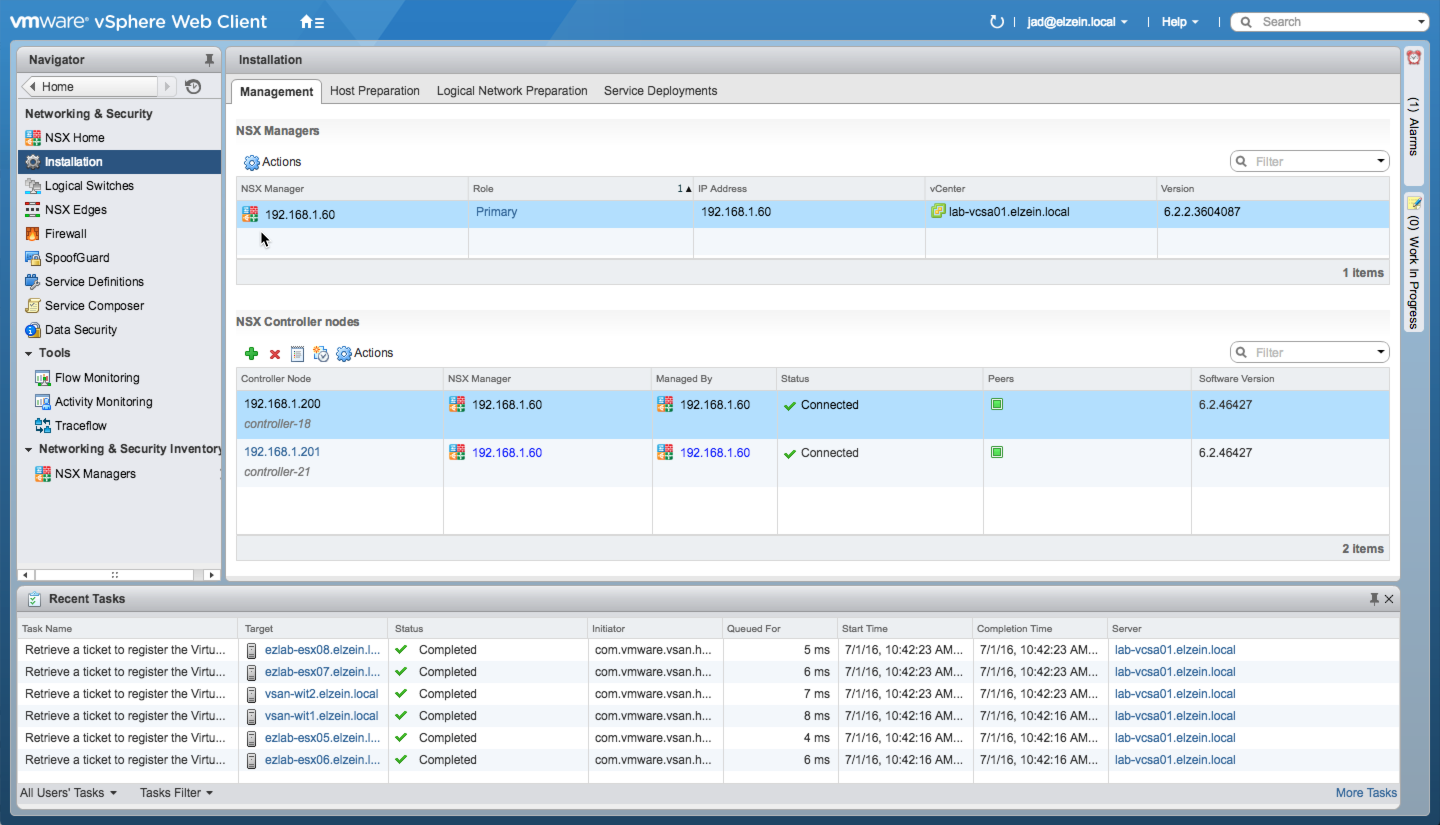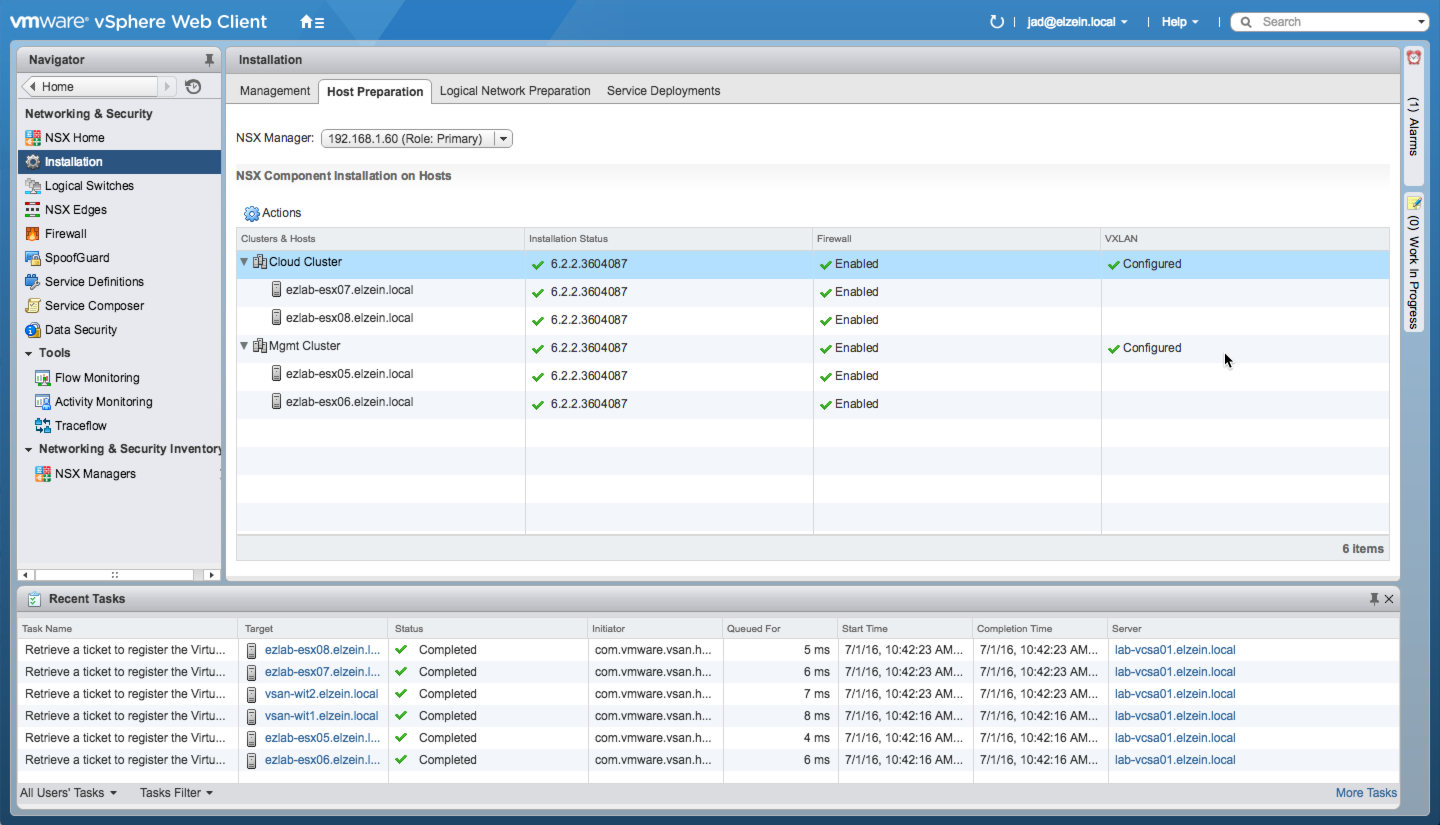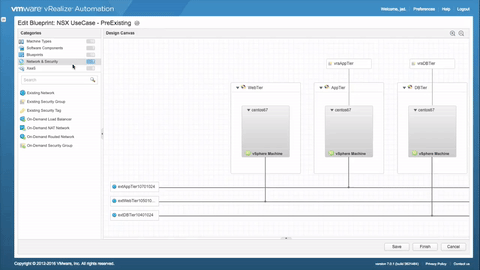vRA and NSX – Part 1, vSphere Prep
Introduction
There are a few prerequisite steps to complete on the vSphere and NSX side before vRA can be configured to consume its services or deliver on-demand networking and security. In Part 1 of this series, we will use the vSphere Web Client to review the NSX baseline deployment and add the necessary configurations for staging. What is configured here will depend on the desired objectives and use cases…I’ll cover minimum requirements.
Note: These steps assume you have already deployed NSX Manager, registered NSX with vSphere, and prepared hosts / clusters per best practice.
Objectives:
- Review NSX deployment in vSphere to ensure prerequisites are in tact
- Validate Logical Network / VXLAN configuration
As mentioned previously, this guide assumes a basic NSX deployment has been completed. This section will review the lab configuration and validate NSX has been properly deployed and configured.
…1. Log in the vSphere Web Client.
2. Navigate to Networking & Security to review the existing NSX deployment configuration.
3. Select Installation in the Networking & Security pane.
4. In the Management tab, verify that at least one primary NSX Manager is available and at least one NSX Controller Node has been deployed (with status: Connected):
5. In the Host Preparation tab, expand the target clusters and ensure Installation status, Firewall, and VXLAN are all showing a green check mark:
In this example, there are two configured clusters — Cloud Cluster and Mgmt Cluster.
![[virtualjad.com]](https://www.virtualjad.com/wp-content/uploads/2018/11/vj_logo_med_v3.png)



